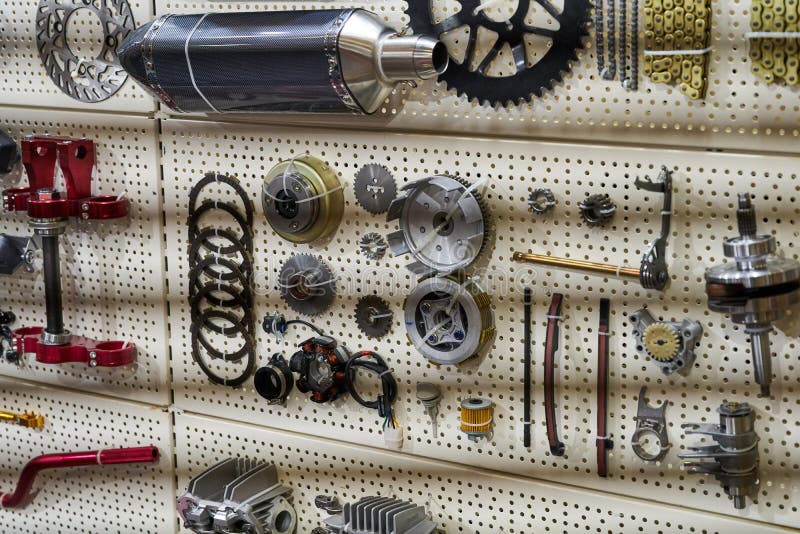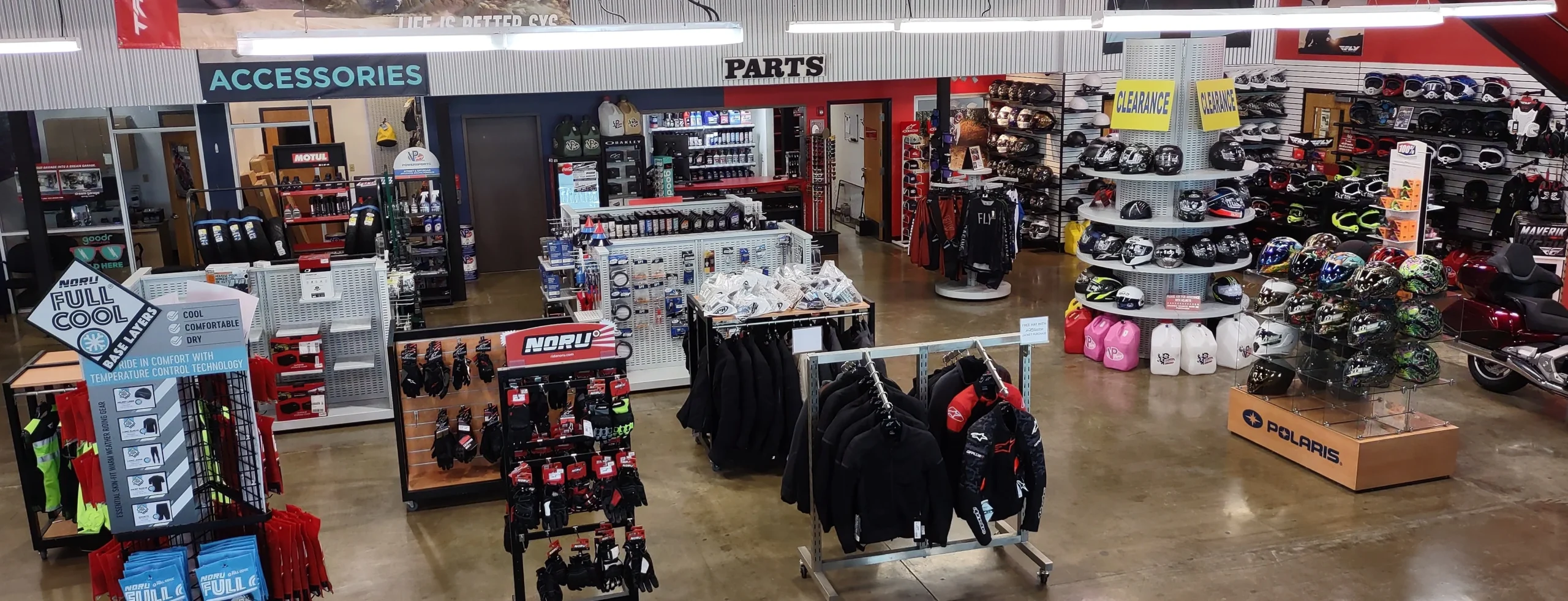Discover High Quality Moto Parts NZ for All Your Motorcycle Needs
Discover High Quality Moto Parts NZ for All Your Motorcycle Needs
Blog Article
Recognizing the Vital Parts of a Bike: A Comprehensive Overview for Lovers
For motorbike fanatics seeking to elevate their riding experience and guarantee their bikes run efficiently, understanding the important components of a bike is vital. Each aspect, from the engine's complex operations to the critical function of the stopping mechanisms, not only impacts efficiency yet also security and convenience. This overview will certainly go through the essential components that every rider must be acquainted with, allowing notified selections in both maintenance and prospective upgrades. As we begin this expedition, one must ask: how does each element connect to develop the seamless ride every fanatic seeks?
Engine Components

The camshaft plays a crucial duty in managing the timing of the engine's valves, guaranteeing the accurate opening and closing required for effective gas and air intake, in addition to exhaust expulsion. This timing is critical to preserving optimum engine performance and effectiveness. In addition, the carburetor or fuel shot system, relying on the motorcycle version, is in charge of blending air with fuel in the correct proportion for burning.
The cooling system, either air or liquid-based, works to keep the engine's temperature level within operational limitations, preventing getting too hot and making certain durability - mx gear nz. Each component, diligently developed and integrated, adds to the smooth procedure of the engine, specifying the motorcycle's power outcome and general efficiency
Transmission System
Indispensable to the bike's performance, the transmission system makes sure reliable power transfer from the engine to the wheels. This system consists of numerous crucial elements, consisting of the clutch, transmission, and final drive, each playing an important duty in translating the engine's power into motion. The clutch, typically operated by a hand bar, serves to disengage the engine and involve from the transmission, permitting smooth gear modifications and controlled acceleration.
The transmission, frequently described as the transmission appropriate, consists of a set of gears that bikers can manually move with to readjust the bike's rate and torque outcome. These gears are organized in a sequence that allows the motorbike to speed up smoothly and preserve optimum engine performance across numerous rates. A lot of motorcycles use a sequential transmission, requiring the biker to move equipments in a predetermined order.
Braking Mechanisms
While recognizing the transmission system is essential to utilizing a bike's power, just as essential is the capability to regulate and quit that power effectively, which is where braking mechanisms come right into play. Brakes are vital for security and performance, giving the motorcyclist with the needed control to navigate numerous terrains and problems. Normally, motorbikes feature two kinds of braking systems: disc brakes and drum brakes.
Disc brakes are more widespread in modern motorcycles due to their premium efficiency. This system offers much better warmth dissipation, constant efficiency, and boosted stopping power, particularly in damp conditions.
Alternatively, drum brakes, though less common, are still located in some bikes. They work by pressing brake footwear against the inner surface of a drum connected to the wheel. While usually less effective in heat dissipation and stopping power, drum brakes are easier and extra affordable.
Comprehending these stopping systems' subtleties permits cyclists to maintain their motorcycles effectively and appreciate the engineering that makes sure secure and efficient quiting.
Suspension and Steering
Suspension and steering systems are essential elements that substantially influence a motorcycle's handling and experience convenience. The shock absorber, including forks at the front and shock absorbers at the rear, takes in roadway abnormalities, enhancing stability and control. Front forks, upside down or normally telescopic, compress and rebound to reduce effects, while back shock absorbers maintain tire contact with the roadway, crucial for traction and security.
Guiding, centered around the handlebars, links the motorcyclist to the bike's directional control. The guiding head bearings make sure smooth procedure, enabling precise ability to move. Correct placement and upkeep of these bearings are essential for predictable guiding feedback and lowering motorcyclist exhaustion.
The suspension's adjustability is an additional vital element; preload, damping, and rebound setups permit personalization to suit numerous riding conditions and designs. This flexibility is necessary for optimizing performance, whether navigating urban roads or tackling sturdy routes. Developments like electronic shock absorber use real-time adjustments, boosting adventure high quality throughout varied surfaces.

Electrical Systems
After making sure a smooth and regulated experience via efficient suspension and guiding systems, focus turns to the electric systems, a crucial element of modern-day motorcycles. These systems play a vital role not just in starting the engine but likewise in powering numerous components that improve the capability and safety of the motorbike.
At the heart of a bike's electric system is the battery, which stores electrical power necessary for beginning the engine and powering auxiliary systems bike exhaust shop near me - motorcycle shop. The generator or generator, coupled with the rectifier-regulator, guarantees the battery stays billed while the bike is in procedure, transforming mechanical energy into electrical energy and maintaining voltage levels
The ignition system, another crucial element, is in charge of igniting the air-fuel mixture in the engine's cylinders. Modern motorbikes usually utilize an electronic ignition system, using greater effectiveness and integrity compared to typical systems.
Lights systems, including fronts lights, tail lights, and indicators, are likewise essential, making sure visibility and security for the rider. Extra digital parts such as sensors, control devices, and displays add to advanced attributes like fuel injection monitoring, anti-lock braking systems (ABDOMINAL MUSCLE), and heated grips for bike electronic control panels, better improving the riding experience.
Conclusion
A thorough comprehension of a motorcycle's crucial parts, including the engine, transmission system, stopping devices, suspension, steering, and electrical systems, is indispensable for lovers aiming to enhance security, comfort, and performance. Mastery of these aspects enables notified choices concerning upkeep and upgrades, ultimately improving the riding experience. By incorporating this knowledge, bikers can guarantee their motorcycles operate at peak performance and reliability, thus optimizing both enjoyment and durability of their automobiles.
For bike enthusiasts looking to raise their riding experience and guarantee their bikes run efficiently, comprehending the important parts of a motorbike is critical.Important to the bike's functionality, the transmission system makes sure reliable power transfer from the engine to the wheels.While understanding the transmission system is crucial to utilizing a bike's power, equally essential is the capability to regulate and quit that power properly, which is where stopping devices come right into play. Typically, motorbikes include 2 types of braking systems: disc brakes and drum brakes.
A complete understanding of a bike's essential components, consisting of the engine, transmission system, stopping devices, suspension, guiding, and electric systems, is crucial for enthusiasts intending to Home Page optimize safety, performance, and convenience.
Report this page